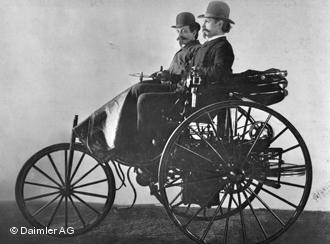The global auto population surpassed the 1 billion mark last year according to a report released last month by the auto industry consultant Ward’s Auto.
China topped the ranking with an addition of about 17 million units last year for an increase of 27.5% in registration from previous year. China has the second largest population of cars in the world after the U.S. China also accounted for nearly half of the global growth last year.
Car sales in India rose by 8.9% last year with over 20 million vehicles on the road currently. Brazil took the third place by adding about 2.5 million units. To put the China and India auto figures in perspective, the U.S. total vehicle population is over 240 million making it the home of the largest auto population in the world. The US ownership ratio stands at one car for every 1.3 Americans. On the other hand, with a population of 1.17 billion people, India has one car for every 56.3 Indians.
From its humble beginnings 125 years ago, cars have become an important pillar of the global economy today. The following excerpts are from a special report on the auto industry in Deustche Welle:
The history of the modern automobile began on Jan. 29, 1886 when engineer Carl Benz registered a patent in the city of Mannheim for his motorcar.
It was a vehicle with three wheels – called a “tricycle” on the patent application – equipped with an internal-combustion engine. The machine could generate 0.8 horsepower (0.6 kilowatts), was started with a crank and had a top speed of 18 km/h (11.2 mph).
Carl Benz (right) in his patented vehicle
Source: Deustche Welle
In the past few years soaring gas prices have forced many consumers to buy fuel-efficient cars. In addition, the demand for ethanol and electric-powered vehicles continues to increase as consumers become more educated on environmental issues. Even the notoriously green-averse Americans have joined Europeans in embracing green-friendly products. For example, a few years ago General Motors (GM) finally stopped production of the Hummer SUVs, a gas-guzzling civilian version of military Humvees.
It is fascinating to note that electric cars beat gasoline-powered cars in setting the first speed records. From the DW report:
In one of history’s little ironies, the first speed records were actually set with electric cars. In 1901, one vehicle exceeded 100 km/h (62 mph).
The gasoline-powered engine was not yet the standard, and around the turn of the century, different types of drives were still competing with one another. Manufacturing data from American producers in 1900 shows that 75 makers assembled a total of 4,192 automobiles during that year, including 1,688 steam-driven vehicles and 1,575 electric cars. Only 929 of the cars made had gasoline engines.
It took about another two decades for gasoline engines to establish themselves. But they eventually took the top spot thanks to their higher speeds, better motors, cheap fuel, and the much greater distances they could cover, especially compared to electric motors with their weak batteries.
Investment opportunities in the Auto industry:
The best way to profit from the growth in the global auto industry is to invest in companies that supply parts to automakers. This includes manufacturers of parts such as tires, sensors, chemicals, windshields, brakes, electrical systems, interiors, etc.
Ten foreign auto parts makers trading on the US markets are listed below for further research:
1.Company: Magna International (MGA)
Country: Canada
2.Company: Autoliv (ALV)
Country: Sweden
3.Company: Bridgestone (BRDCY)
Country: Japan
4.Company: Denso (DNZOY)
Country: Japan
5.Company: Michelin (MGDDY)
Country: France
6.Company: Nokian Tyres (NKRKY)
Country: Finland
7.Company: Rheinmetall (RNMBY)
Country:Germany
8.Company: Continental (CTTAY)
Country: Germany
9.Company: Valeo (VLEEY)
Country: France
10.Company: Geely Automobile (GELYY)
Country: Hong Kong
Disclosure: Long VLEEY and DNZOY

